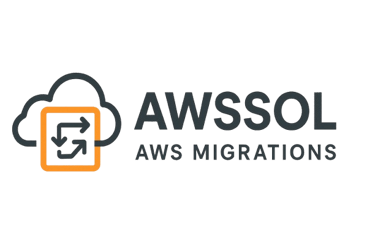Essential Steps for AWS Migration from On-Premises to the Cloud
2 min read


Introduction to AWS Migration
In today's rapidly evolving technological landscape, many businesses are considering migrating their on-premises infrastructure to cloud solutions. Amazon Web Services (AWS) has emerged as a leader in providing comprehensive cloud services. This post outlines the essential AWS migration steps to ensure a seamless transition from on-prem to the cloud.
Step 1: Assess Your Current Infrastructure
The first step in any successful AWS migration is to conduct a thorough assessment of your existing infrastructure. This involves understanding your current systems, applications, and workflows. Identify workloads that can be moved to AWS and those that may require modification. By evaluating these elements, you can formulate a robust migration strategy and avoid potential pitfalls.
Step 2: Choose the Right Migration Method
Once you have assessed your infrastructure, the next vital step is to select the appropriate migration strategy. AWS offers various migration approaches, including:
- Lift and Shift: This method involves moving applications as-is, without any modification.
- Re-platforming: This step includes tweaking applications to take better advantage of cloud capabilities.
- Refactoring: Deep modifications of applications to fully leverage cloud-native features.
Choosing the right method depends on your specific business needs, budget, and desired outcomes. It’s crucial to align your selected strategy with organizational goals.
Step 3: Implement Security and Compliance Measures
Security should be a top priority during your AWS migration. Determine what security controls are necessary to protect your data, both during and after the migration process. AWS provides tools and services that can help you ensure compliance with relevant regulations. Consider implementing AWS Identity and Access Management (IAM) to control access to your cloud resources. Additionally, ensure that data encryption is enabled for both in transit and at rest.
Step 4: Conduct a Pilot Migration
Before executing a full-scale migration, it’s wise to conduct a pilot migration. This involves moving a small, non-critical workload to AWS to evaluate the process and address any unexpected challenges. Monitoring the performance and functionality of the application in the cloud can provide invaluable insights and help refine your migration strategy.
Step 5: Perform the Actual Migration
Having successfully completed the pilot migration, you can now proceed with the actual migration. Utilize AWS Cloud Migration tools to facilitate the process. Ensure you have backup and rollback plans in place to prevent data loss. Communication with all stakeholders during migration is crucial for addressing any issues swiftly.
Step 6: Optimize and Monitor Post-Migration
After your workloads have been migrated to AWS, the final step is optimization. Review and adjust resource allocation to ensure cost-effectiveness. Use AWS CloudWatch to monitor application performance, and continuously evaluate your cloud strategy to optimize for future needs.
Conclusion
Migrating from on-premises infrastructure to AWS cloud solutions is a multi-faceted process that requires careful planning and execution. By following these essential AWS migration steps, businesses can harness the power of the cloud while minimizing disruption and maximizing efficiency.
